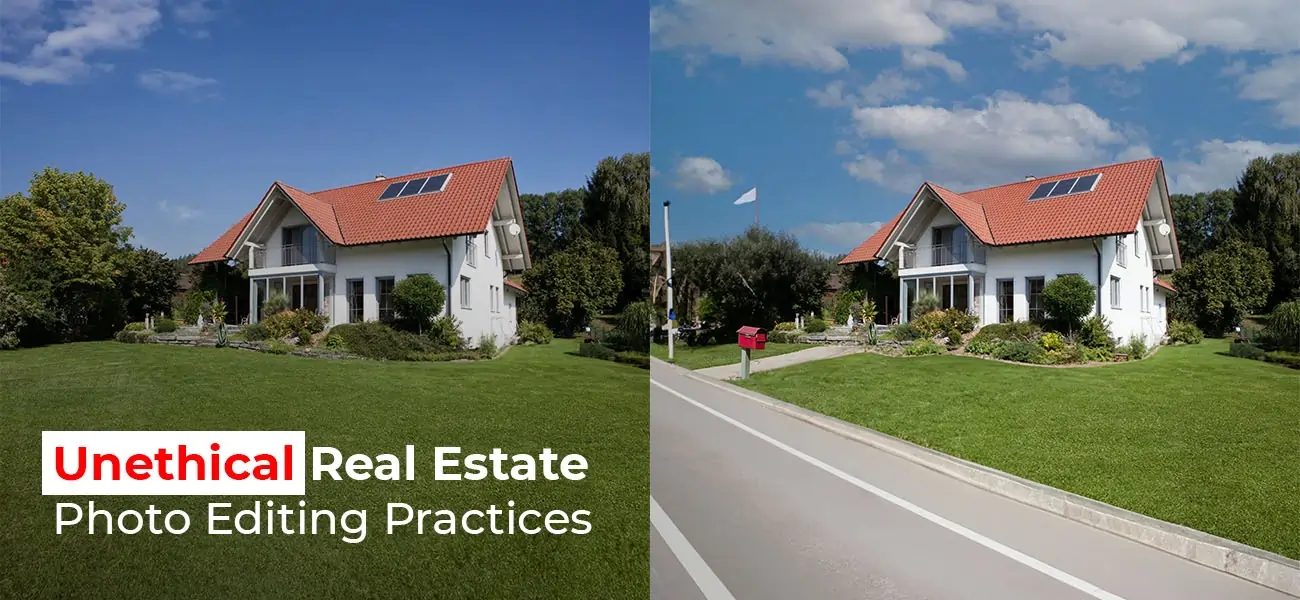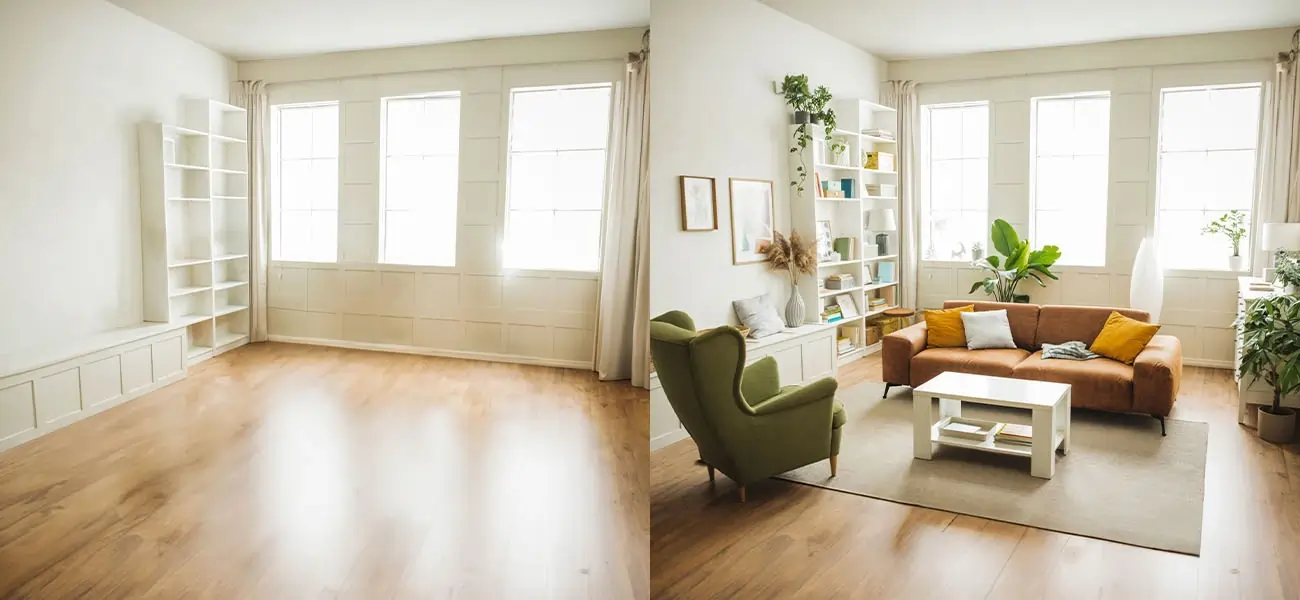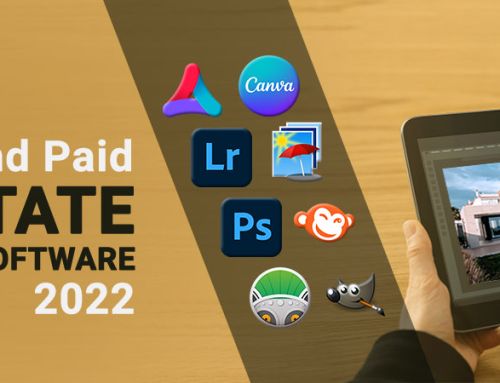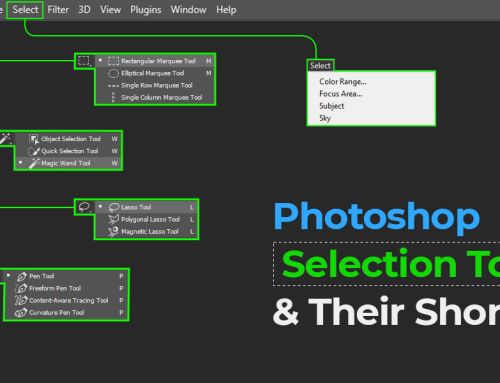Photo editing is a great way to improve the appeal of your real estate photos. It can attract homebuyers and convince them to give your property a chance for consideration. However, some practices are considered unethical in real estate photo editing.
If you are a real estate agent, photo editor, or homeowner, you must know which practices are unethical to avoid getting in trouble with the law.
In this article, we will learn:
- How to determine if editing methods are unethical?
- What are the unethical real estate photo editing practices?
- What editing practices are considered ethical?
What factors determine if a photo editing practice is ethical?
Photography editing ethics change depending on the person, time, type of photography, and location, as they are subjective, fluid, and contextual. What might be considered ethical in New York might be unethical in London. Considering the fluid nature of ethics, how do you know what photo editing practices are ethical?
Here are some simple things you can consider helping you determine what practices are ethical.
Does the editing misrepresent or deceive the buyer?
Like most images, real estate photos are edited to make them more attractive and appealing to prospective buyers. However, if you edit the photos to deceive the public by covering up property flaws, it is considered unethical photo manipulation.
How will the photo editing impact the homebuyer?
Before you edit real estate images, ask yourself if the processed photos will cause the buyer any loss. Would the homebuyer make an offer on the property if they saw it in person? Will the editing increase the listing price by an unjustified amount?
Is there a possibility of running into legal issues?
Photo editing is essential in real estate, but how far should you go to impress potential buyers? Many countries have laws and protections against photo manipulation. Read the laws that apply to your work to avoid legal trouble.
With that said, let’s look at some unethical real estate photo editing practices.
What real estate photo editing practices are considered unethical?
Most realtors and photo editing companies self-impose specific guidelines to ensure they don’t get into legal trouble. Maintaining a code of ethics in your real estate business is vital, as many homebuyers make an offer without setting foot on site.
According to Redfin, as much as 63% of homebuyers made an offer sight unseen in 2020.
However, some still operate on the fine line between ethical and unethical photo editing practices. Moreover, heavy alterations must be disclosed to protect the homebuyer.
Generally, unethical practices misrepresent the truth to deceive potential homebuyers. Here are some unethical practices by real estate agents in real estate photo editing:
Changing flooring, fixtures, or paint
Changing your property flooring and walls is unethical if these updates are not made in the home. Making these edits in your photos might increase the appeal of your property, but it is a dishonest manipulation.
Many buyers make an offer without physically visiting the site, so they rely on your images and honesty to decide.
Removing permanent objects
If your property has two ugly buildings on either side, you cannot remove them from the photo to make your property look good. The same goes for if there is a giant billboard right outside your bedroom window or a vent opening in a wall.
Some other objects you can’t remove from real estate photos are mailboxes, fire hydrants, posts, etc.
A home buyer must consider many things when choosing a property. They also consider a house’s surroundings and environment before making an offer. This practice can also lead to a distrust in your real estate agency.
Dramatic color manipulation
Color and brightness corrections are important first steps in photo editing, but it doesn’t mean you can completely change an object’s color. Some colors, especially those of wood, determine its type.
For example, manipulating the colors in a way that mahogany floors look like walnut floorings. It is unethical because there is a price difference between the two types of wood.
Removing imperfections without disclosure
Cracks or holes in the walls or tiles, stained and etched marble, damage in the flooring, etc., are imperfections that impact property value. Removal of such blemishes without actually fixing them in real life amounts to deception.
Even if such imperfections are edited out, you must disclose these edits so the homebuyer can make an informed decision.
Distorting room sizes and layouts
Another unethical practice is distorting rooms to make them look bigger or to change the layout. This practice has an undue influence on the buyer’s home visualization. In this case, the only acceptable adjustments are those made to correct lens distortions.
Now, let’s look at some ethical photo editing practices in real estate.
What are the ethical real estate photo editing practices?
Ethical real estate photo editing involves cosmetic changes or edits that don’t affect the home value. They are not considered manipulative as they only attract eyes to your listing, not influence a buyer’s decision.
Here are some ethical changes you can make to your property images:
Perspective correction
Here, you correct walls and other straight objects that look titled or slanted. Sometimes, camera lens or exposure issues can make straight objects appear as if they are leaning or titling. Photo editors correct this issue by using grids as guidelines and pulling the slanted lines back to the proper place.
Virtual staging
Virtual staging is where photo editors expertly design an empty room with virtual decor to create realistic images of the property for prospective buyers online. The virtual furnishings can include furniture, lights, cushions, curtains, etc.
This practice is considered ethical, as some properties don’t come with furnishings.
With virtual staging, prospective buyers can better visualize the entire property (interiors and exteriors). However, it must be clarified that the furnishings are only to help buyers visualize the place.
Removing owner’s clutter
If you plan on selling your house, you probably don’t want to put personal items on full display on the property listing. If you can’t remove some things just for a good photo, you can edit them out in the post-processing phase.
While preparing your property before a photoshoot would be ideal, some things are too big to remove. There might even be some items you forgot to clear before the photos were taken. A skilled photo editor can remove these objects from your images in such cases.
Removing temporary objects
Birds, pets, cars, ‘For Sale’ signposts, and pedestrians are temporary obstructions that can reduce the appeal of your property photos. Removing such temporary objects with photo editing is considered ethical as they go away in minutes in real life. They are not permanent fixtures on the property.
Day-to-dusk photo editing
Making your daytime real estate photos appear like they were taken at night is another ethical photo editing practice. The objective here is to aid a potential buyer’s property visualization. They can see how the property looks when it is fully lit up.
Day-to-dusk editing is especially helpful when you don’t have immediate access or the budget to take twilight photos of your property.
Blue sky editing
Sky replacement is an ethical real estate photo editing practice that replaces dull skies with blue skies. It is impossible to predict what the sky will look like when you set out for a property photoshoot. It could be bright and sunny when you leave for the site and turn cloudy when you reach.
This practice helps improve the overall appeal of the property image. You are also saved from holding multiple photoshoots to get the ‘perfect shot.’
Green grass editing
Grass can dry out and die out depending on the season. You don’t always have control over the appearance of your lawn. Green grass editing is a practice where patchy lawns are made fuller and greener. Lawn photo editing only improves the property’s aesthetics in the photos and doesn’t impact property value.
Wrapping up!
We hope this article has given you a clear understanding of what real estate photo editing practices are unethical. Most photo editing companies know what methods ethical and what editing practices can get them into legal trouble.
However, having this information can help you make informed decisions when hiring professional photo editors.
All the best in your real estate business! Cheers!





